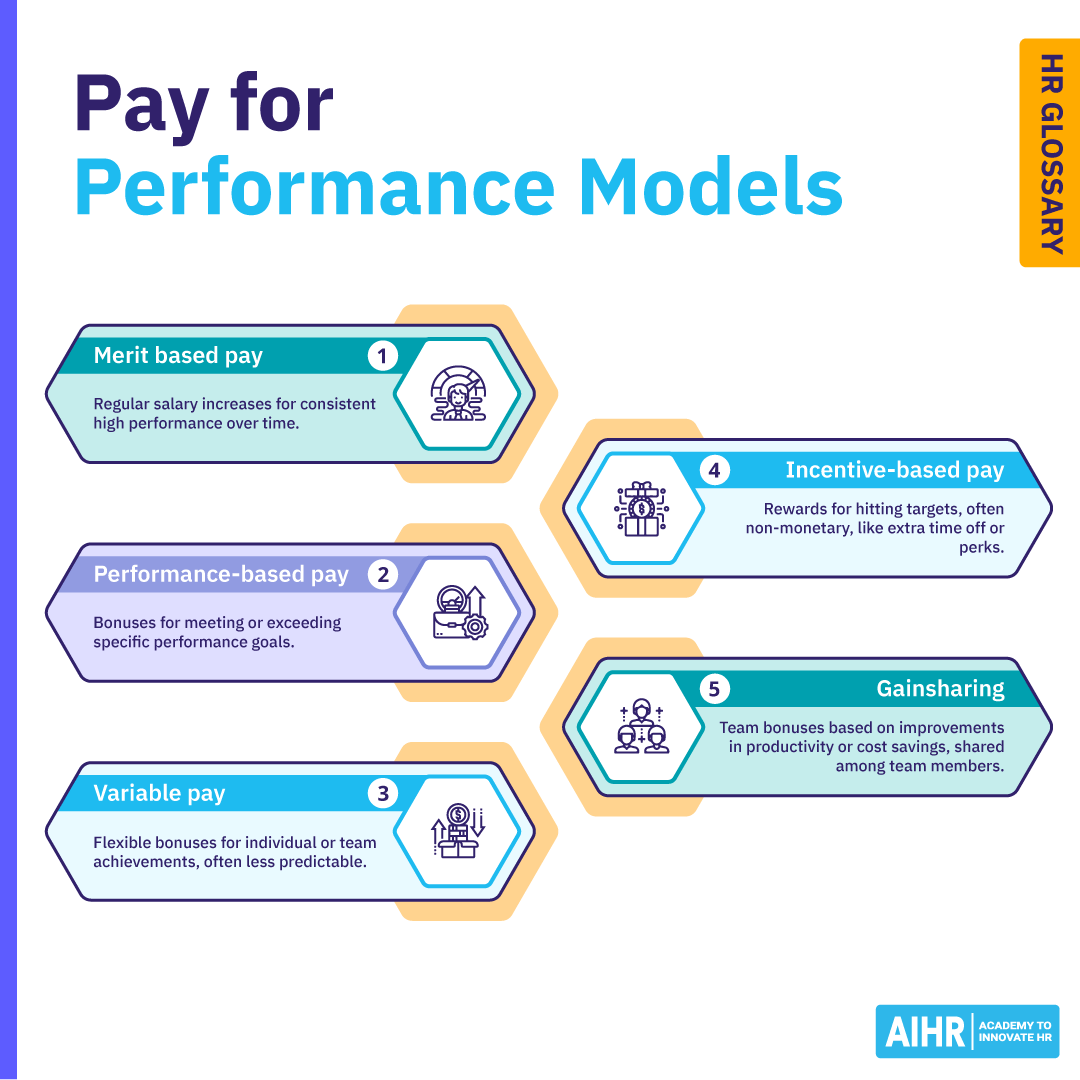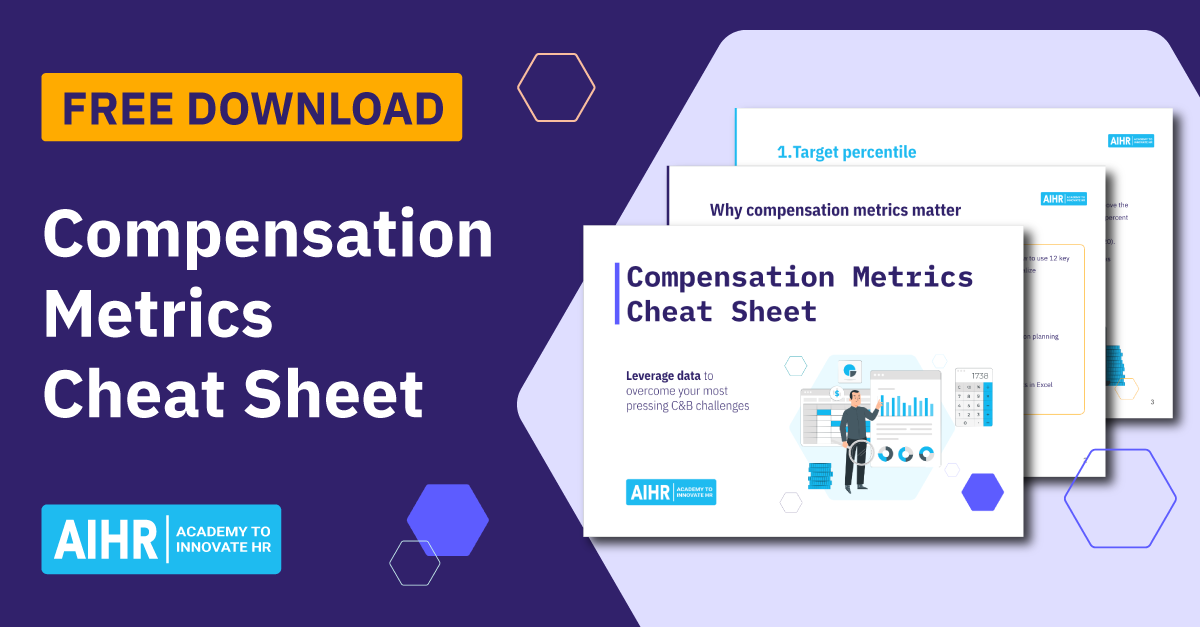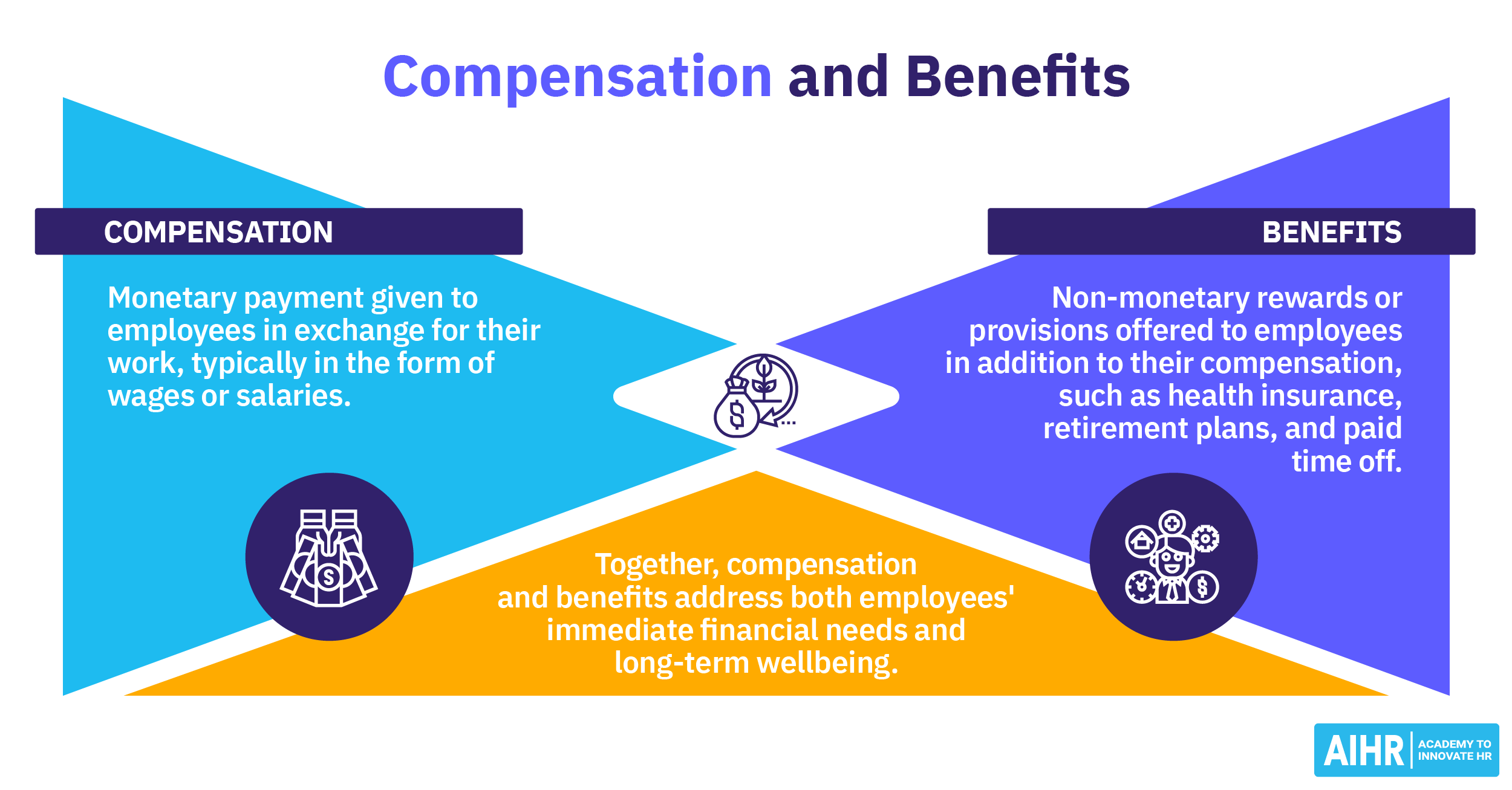Pay for Performance
What is pay for performance?
Pay for performance (P4P) is a payment structure that builds on an employee’s base pay when they meet or exceed measurable performance metrics. It is often seen as a fairer and more adaptive way to reward employees who put in great effort and get better results, compared to the traditional salary system.
This model is widely used in roles with clear performance indicators, like sales, where goals might include revenue targets or units sold. However, it can also be adapted to roles with less tangible outcomes by setting specific, measurable objectives aligned with company priorities.
A survey revealed that 81% of top-performing companies (compared to 74% of average companies) practiced some form of P4P. This suggests a correlation between performance-based compensation strategies and organizational success.
How does pay for performance work?
In a pay for performance system, employees earn financial rewards based on how well they meet specific targets, which are often set out in measurable terms at the beginning of a performance period. Performance goals can be individual, team-based, or tied to broader company objectives. For instance, a salesperson might aim to hit a revenue target, while a customer service representative could focus on maintaining high satisfaction scores.
Once the goals are established, employee performance is tracked through reviews or performance metrics relevant to their role. Employees who meet or exceed these targets can earn additional compensation like bonuses, commissions, or even non-monetary perks, such as extra time off or professional development opportunities. This approach works best when the performance targets align with both employees’ strengths and company goals and when fairness is maintained so rewards genuinely reflect contributions.
Types of pay for performance models
Pay-for-performance models vary widely, depending on what the organization values and wants to incentivize. Here are some of the main models, each accompanied by an illustrative example:
1. Merit-based pay and merit increase
Merit-based pay involves adjusting an employee’s base salary over time to reflect sustained high performance. During regular salary reviews, employees who consistently meet or exceed performance expectations receive a permanent raise in their base pay. This model is designed to recognize long-term contributions and steady growth rather than short-term achievements.
→ Example: A high-performing project manager receives a 5% raise during the annual salary review for consistently meeting project goals and maintaining high client satisfaction. This increase reflects their steady, long-term performance.
2. Performance-based pay
In a performance-based pay model, employees earn bonuses on top of their base salary for reaching specific, measurable goals. This model rewards achievements tied to particular performance periods, such as quarterly or annually, rather than impacting base pay. Unlike merit-based pay, this approach allows for one-off rewards for individual performance within a defined timeframe.
→ Example: A marketing analyst earns a $1,500 bonus at the end of the quarter for exceeding lead-generation targets. This one-time bonus rewards them for their exceptional performance during that specific quarter without changing their base pay.
3. Variable pay
Variable pay also involves bonuses on top of base pay but in a more flexible and often less predictable manner. It may be paid in discretionary bonuses for in-the-moment performance or non-discretionary bonuses based on setting long-term or short-term goals and milestones. This model is used to recognize outstanding contributions or key milestones, either individually or across a team.
→ Example: A customer service team receives a monthly discretionary bonus for achieving the highest satisfaction scores across the company. This bonus varies each month and recognizes the team’s responsiveness and quality in customer interactions.
4. Incentive-based pay
Incentive-based pay rewards employees for reaching specific targets, but the reward isn’t necessarily monetary. This model includes financial incentives, like commissions, as well as non-monetary perks, such as additional paid time off (PTO), travel rewards, gift cards, or company stocks. The goal is to encourage employees to meet defined benchmarks through a mix of monetary and non-monetary rewards.
→ Example: A sales representative receives a 10% commission on every sale closed, along with an additional non-monetary incentive of an extra vacation day for exceeding monthly sales targets.
5. Gainsharing
Gainsharing is a team-based approach where employees receive bonuses tied to specific improvements in performance, productivity, or cost savings. Teams work toward defined goals, and share any measurable gains among one another. Gainsharing emphasizes collaboration and efficiency, linking rewards directly to collective achievements.
→ Example: A manufacturing team meets its goal of reducing production costs by 10%, resulting in a $2,000 bonus pool split among the team members. Gainsharing here rewards the team’s collective efforts to improve efficiency and reduce expenses.

Pay for performance pros and cons
P4P can be seen as a benefit, allowing employees to set their own rate of pay based on their efforts, but it can also lead to competition or burnout if not implemented strategically.
The advantages
Here are some of the key benefits of pay for performance are:
- Higher performance: Directly linking compensation to achieving performance goals encourages employees to excel and boosts productivity.
- Tangible rewards for effort: Hardworking employees receive tangible rewards for their achievements, fostering a culture of excellence.
- Enhanced earnings potential: Based on their performance, employees can earn above their base salary, which is appealing to high achievers.
- Control over compensation: Employees can exert more influence over their earnings by focusing on meeting or exceeding performance targets.
- Clear goals: This system helps managers set specific and measurable goals, improving clarity and efficiency in performance management.
The disadvantages
Some of the most common problems with pay for performance are:
- Unhealthy competition: It can foster unhealthy competition among team members, potentially disrupting teamwork and collaboration.
- Increased stress: The pressure to meet performance targets can lead to stress and burnout among employees.
- Quantity over quality: There’s a risk that quantity of work may be prioritized over quality, potentially compromising overall standards.
- Rigidity: Once implemented, these systems can be difficult to modify or remove, even if they are not working effectively.
- Potential for bias and favoritism: There’s a potential for bias or favoritism in incentive distribution, which can undermine fairness and morale.
Develop expertise in performance-based pay strategies for effective rewards
Pay for performance aligns compensation with results, motivating employees to achieve specific goals.
In AIHR’s Compensation & Benefits Certificate Program, you’ll learn to set up and manage fair, data-driven pay structures that reward high performance while maintaining compliance and transparency.
Implementing pay for performance: Best practices for HR
Here are some best practices for HR professionals to consider when implementing P4P:
- Set measurable and equally achievable goals: Help managers set consistent, measurable performance goals anyone in the workforce can achieve with focus and hard work.
- Set appropriate compensation levels: Set equal compensation and bonus pay levels appropriate for the work provided.
- Balance the cost and value between incentives and increased performance: Ensure the cost of paying incentives is balanced with the value gained from increased performance when milestones are met.
- Ensure transparency: Provide complete transparency regarding performance and rewards.
- Prevent bias and discrimination in incentive implementation: Make sure managers distribute performance pay evenly without bias, discrimination, or favoritism.
- Maintain compliant compensation plans: Ensure your P4P system’s compliance with state, county, and city regulations and laws.
HR tip
Regularly review P4P implementation within each team. Monitor performance reviews and metrics to ensure pay is accurately measured and fairly distributed.
FAQ
Pay for performance (P4P) is a compensation strategy that rewards employees based on their work results. Rather than receiving a fixed salary regardless of performance, employees earn bonuses, commissions, or raises when they meet or exceed specific goals or targets. This approach is designed to motivate high performance and align individual efforts with company objectives.
Pay for performance can be highly effective in driving motivation and productivity, especially when goals are clear and rewards are meaningful. It encourages employees to focus on results and align their efforts with company goals. However, its effectiveness depends on fair measurement, transparency, and ensuring targets are realistic and within the employee’s control. If poorly implemented, it can lead to stress, unhealthy competition, or even unethical behavior.









